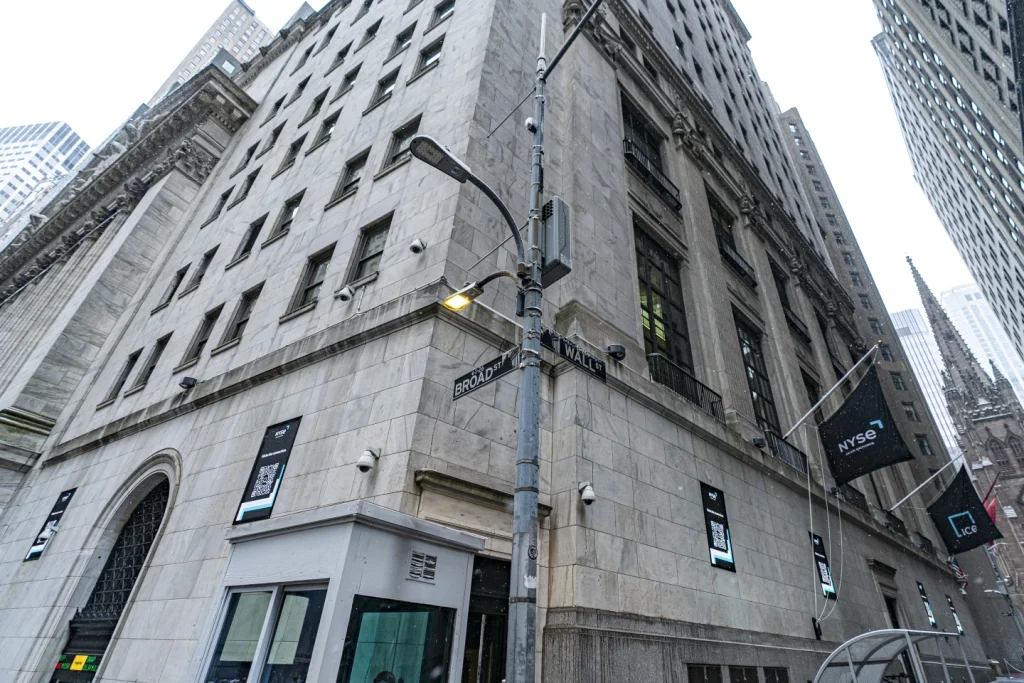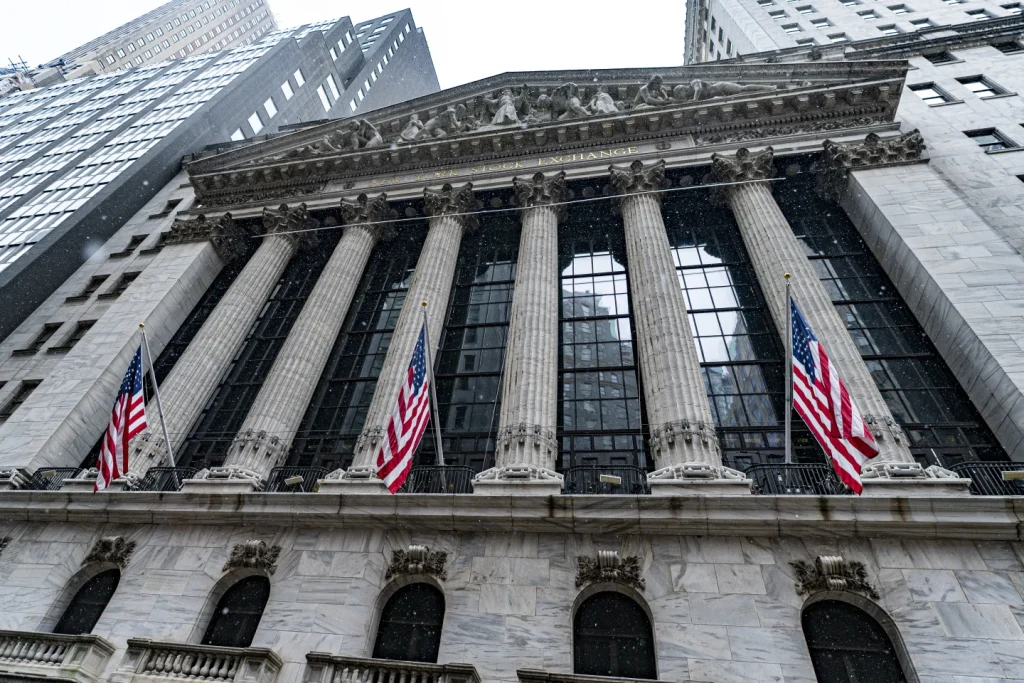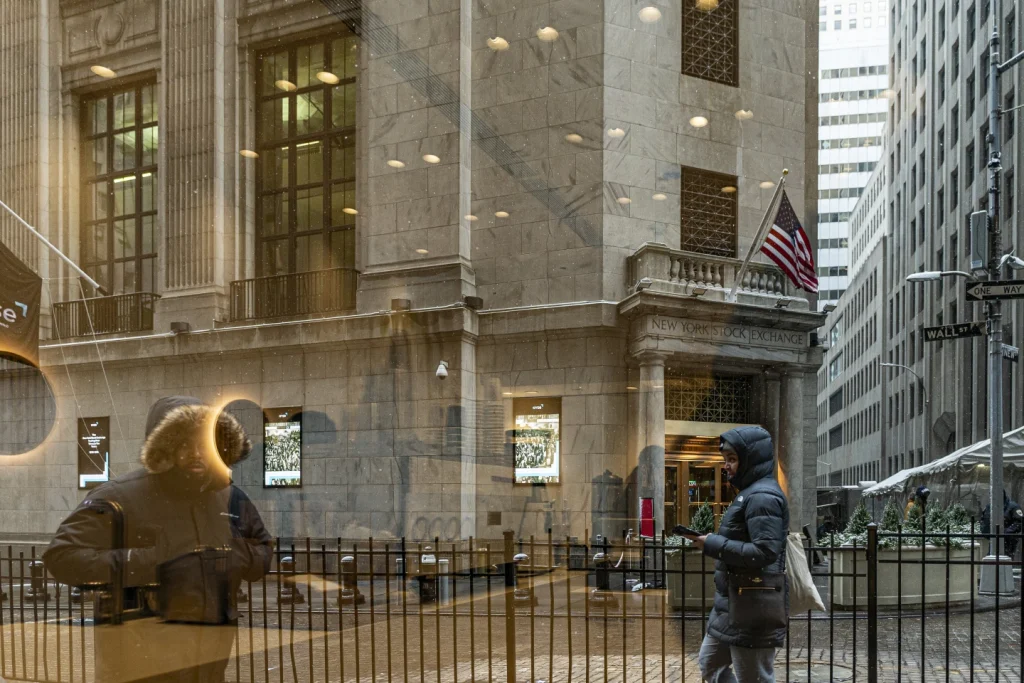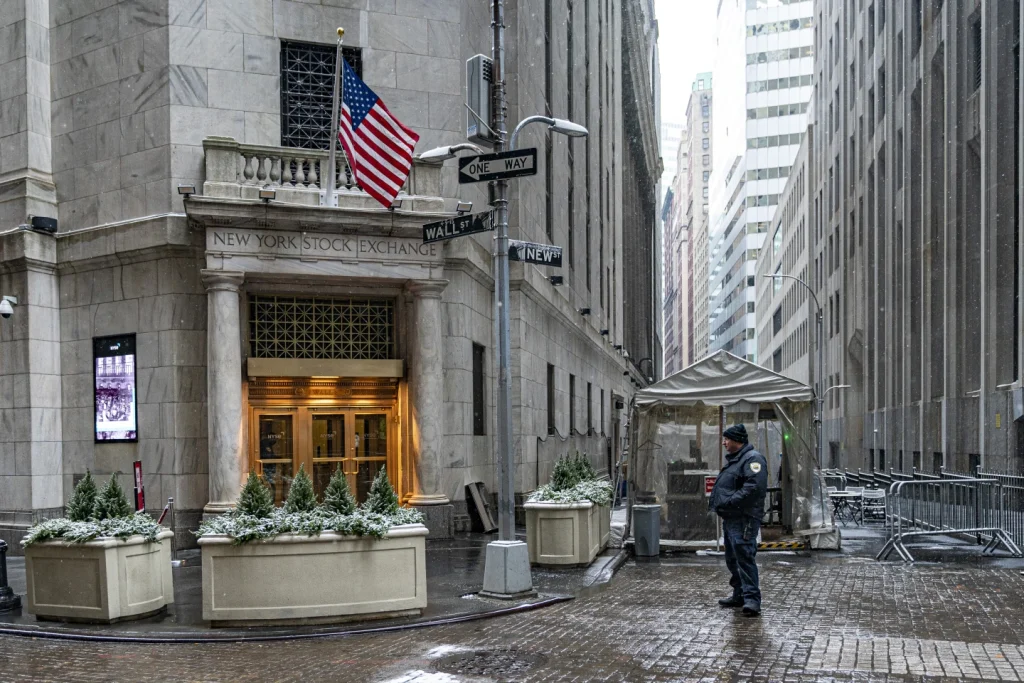The recent resurgence of Wall Street to record heights marks a remarkable turnaround after a tumultuous two-year period characterized by soaring inflation and persistent concerns about an impending recession.
The S&P 500, a pivotal barometer for both individual and professional investors, surged by 1.2% to reach 4,839.81, effectively erasing the losses it had incurred since its previous peak in 2022.
This remarkable recovery is a testament to the resilience and adaptability of the financial markets in the face of unprecedented economic challenges.
The resurgence of Wall Street is particularly noteworthy given the backdrop of soaring inflation, reminiscent of levels not witnessed since the early 1980s.
The adverse effects of high inflation were not confined to the realm of economic indicators but permeated the psyche of investors and financial experts alike.
The specter of inflation, coupled with concerns about its potential long-term ramifications, loomed large over Wall Street, triggering apprehension and uncertainty.
Amidst the inflationary pressures, the Federal Reserve’s response assumed paramount significance. Traditionally, the Fed has utilized high interest rates as a primary tool to combat inflation.
However, the swift and substantial increase in the main interest rate from near-zero levels to its highest point since 2001, ranging between 5.25% and 5.50%, sparked apprehension among market participants.
Historically, such aggressive interest rate hikes have been associated with economic downturns, leading to widespread apprehensions about an impending recession.
As Wall Street entered the preceding year, the prevailing sentiment was one of anticipation, with many anticipating a downturn triggered by the Fed’s interest rate adjustments.
The widespread expectation of an inevitable recession was deeply ingrained in the financial landscape, shaping investment strategies and market sentiment.
However, the anticipated downturn did not materialize, defying conventional wisdom and confounding the expectations of many.
The recent resurgence of Wall Street to record highs serves as a testament to the resilience and adaptability of the financial markets.
Despite the formidable challenges posed by high inflation and the specter of a looming recession, the markets have displayed remarkable resilience, defying expectations and charting a path towards recovery.
This resilience underscores the dynamic and multifaceted nature of financial markets, capable of navigating and overcoming profound economic challenges.
The recent resurgence of Wall Street to record heights amid a backdrop of high inflation and recessionary fears exemplifies the remarkable resilience and adaptability of the financial markets.
The markets’ ability to defy expectations and chart a course towards recovery underscores the dynamic and multifaceted nature of the financial landscape.
As Wall Street continues to navigate uncertain economic terrain, the recent turnaround serves as a testament to the enduring strength and resilience of the global financial system.
The current economic cycle has presented a unique set of circumstances, setting it apart from previous cycles.

Amidst this distinctiveness, the economy continues to exhibit growth, with a remarkably low unemployment rate, and a growing sense of optimism among U.S. households.
This atypicality has been attributed to the impact of the pandemic, introducing a level of uniqueness that has shaped the trajectory of economic and financial developments.
Niladri “Neel” Mukherjee, chief investment officer of TIAA’s Wealth Management team, expressed his perspective on this exceptional economic cycle, stating, “I don’t think this cycle is normal at all.
It’s unique, and the pandemic introduced that element of uniqueness.” The disruptions caused by COVID-19 led to snarled supply chains, resulting in shortages and subsequent inflationary pressures.
However, the inflationary trend has since subsided, prompting discussions about the Federal Reserve’s potential move to lower interest rates.
The potential reduction in interest rates holds significant implications for financial markets. Such cuts can be likened to steroids for financial markets, alleviating the built-up pressure on the economy and the financial system.
Anticipation of these rate cuts has already had an impact, with Treasury yields relaxing in expectation of these adjustments. This, in turn, has driven a sharp acceleration in the stock market’s rally.
However, there are dissenting voices that caution against excessive exuberance in predicting the timing of the Federal Reserve’s interest rate cuts. Rich Weiss, chief investment officer of multi-asset strategies at American Century Investments, remarked, “The market is addicted to rate cuts.
They just can’t get enough of it and are myopically focused on it.” The recurrent anticipation of rate cuts, followed by disappointment as inflation proves more persistent than expected, has led to fluctuations in stock and bond markets.
Despite the market’s anticipation, the Federal Reserve itself has hinted at impending rate cuts, albeit potentially later than expected by the market.
This disparity in expectations has led to a situation where the market and the Federal Reserve are not fully aligned, causing fluctuations in financial markets.
Brian Jacobsen, chief economist at Annex Wealth Management, remarked, “The truth is likely somewhere between what the Fed is saying and what the market is expecting. That will continue to cause dips and rips for financial markets until the two reconcile with each other.”
Amidst these discussions, encouraging data emerged from a preliminary report by the University of Michigan, indicating a surge in consumer sentiment to its highest level since July 2021.
This is particularly significant, as consumer spending is a key driver of the economy. Equally important for the Fed, household expectations for upcoming inflation appear to be anchored, allaying concerns of a potential inflationary spiral.
The recent surge in Wall Street was notably driven by a substantial boost from technology stocks, a trend that has become characteristic of its upward trajectory.
In conclusion, the current economic cycle stands out as unique, shaped by the unprecedented impact of the pandemic.

The discussions surrounding potential interest rate cuts by the Federal Reserve have led to significant fluctuations in financial markets, with divergent expectations between the market and the Fed.
As the economy continues to evolve, the reconciliation of these expectations will play a pivotal role in shaping the future trajectory of financial markets.
The recent performance of several chip companies has garnered significant attention, particularly in light of Taiwan Semiconductor Manufacturing Co.’s (TSMC) optimistic revenue forecast for the year.
This positive outlook has reverberated throughout the market, leading to consecutive days of growth for key players in the chip industry. Notably, Broadcom saw a 5.9% increase, while Texas Instruments experienced a 4% climb.
The broader market also reflected this upward momentum, with the S&P 500 reaching a new record, surging by 58.87 points.
Similarly, the Dow Jones Industrial Average, having set its own record a month earlier, gained 395.19 points, representing a 1.1% increase to reach 37,863.80.
The Nasdaq composite also witnessed a substantial rise of 255.32 points, or 1.7%, reaching 15,310.97.
It is worth noting that in the previous year, a handful of prominent Big Tech companies played a pivotal role in driving the majority of the S&P 500’s gains.
Specifically, seven companies, including Microsoft, Apple, Alphabet, Nvidia, Amazon, Meta Platforms, and Tesla, accounted for a staggering 62% of the index’s total return, as per S&P Dow Jones Indices.
These companies, often referred to as “the Magnificent 7,” rode a wave of market enthusiasm surrounding artificial intelligence (AI) technology.

The widespread belief in the potential of AI to catalyze a surge in profits, both for companies leveraging its capabilities and those providing the necessary hardware, fueled investor optimism.
Despite the dominance of these tech giants, some of them have yet to fully recover to their peak levels, exemplified by Tesla, which remains 48% below its all-time high set in November 2021.
This serves as a reminder that even within a market characterized by significant gains, individual stocks can exhibit considerable volatility and fluctuation.
The recent resurgence of the S&P 500 to a record high underscores a crucial lesson for investors—patience and diversification are key strategies for weathering market fluctuations.
History has repeatedly demonstrated that investors who maintain a long-term perspective and distribute their investments across the U.S. stock market ultimately recoup their losses.
This resilience is evident even during prolonged periods of market downturns, such as the “lost decade” spanning from 2000 to 2009, which encompassed the dot-com bubble burst and the global financial crisis.
Despite such challenges, the market has consistently restored investors’ financial positions over time.
Moreover, when factoring in dividends, investors holding S&P 500 index funds had already returned to a break-even point a month ago, further highlighting the potential for recovery and growth within the market.
However, it is essential to acknowledge that risks persist for investors. Uncertainty looms regarding the Federal Reserve’s timeline for interest rate cuts, and the possibility of an economic recession remains a concern.
The impact of interest rate hikes, known for their protracted influence on the financial system, introduces an element of unpredictability, potentially leading to disruptions in unexpected areas of the market.
In conclusion, the recent performance of chip companies and the broader market serves as a testament to the dynamic nature of the stock market.
While celebrating record highs, investors must remain vigilant and cognizant of potential risks, emphasizing the importance of a diversified and patient approach to investment.
The recent performance of several chip companies has garnered significant attention, particularly in light of Taiwan Semiconductor Manufacturing Co.’s (TSMC) optimistic revenue forecast for the year.
This positive outlook has reverberated throughout the market, leading to consecutive days of growth for key players in the chip industry. Notably, Broadcom saw a 5.9% increase, while Texas Instruments experienced a 4% climb.
The broader market also reflected this upward momentum, with the S&P 500 reaching a new record, surging by 58.87 points.

Similarly, the Dow Jones Industrial Average, having set its own record a month earlier, gained 395.19 points, representing a 1.1% increase to reach 37,863.80. The Nasdaq composite also witnessed a substantial rise of 255.32 points, or 1.7%, reaching 15,310.97.
It is worth noting that in the previous year, a handful of prominent Big Tech companies played a pivotal role in driving the majority of the S&P 500’s gains.
Specifically, seven companies, including Microsoft, Apple, Alphabet, Nvidia, Amazon, Meta Platforms, and Tesla, accounted for a staggering 62% of the index’s total return, as per S&P Dow Jones Indices.
These companies, often referred to as “the Magnificent 7,” rode a wave of market enthusiasm surrounding artificial intelligence (AI) technology.
The widespread belief in the potential of AI to catalyze a surge in profits, both for companies leveraging its capabilities and those providing the necessary hardware, fueled investor optimism.
Despite the dominance of these tech giants, some of them have yet to fully recover to their peak levels, exemplified by Tesla, which remains 48% below its all-time high set in November 2021.
This serves as a reminder that even within a market characterized by significant gains, individual stocks can exhibit considerable volatility and fluctuation.
The recent resurgence of the S&P 500 to a record high underscores a crucial lesson for investors—patience and diversification are key strategies for weathering market fluctuations.
History has repeatedly demonstrated that investors who maintain a long-term perspective and distribute their investments across the U.S. stock market ultimately recoup their losses.
This resilience is evident even during prolonged periods of market downturns, such as the “lost decade” spanning from 2000 to 2009, which encompassed the dot-com bubble burst and the global financial crisis.
Despite such challenges, the market has consistently restored investors’ financial positions over time.
Moreover, when factoring in dividends, investors holding S&P 500 index funds had already returned to a break-even point a month ago, further highlighting the potential for recovery and growth within the market.
However, it is essential to acknowledge that risks persist for investors. Uncertainty looms regarding the Federal Reserve’s timeline for interest rate cuts, and the possibility of an economic recession remains a concern.

The impact of interest rate hikes, known for their protracted influence on the financial system, introduces an element of unpredictability, potentially leading to disruptions in unexpected areas of the market.
In conclusion, the recent performance of chip companies and the broader market serves as a testament to the dynamic nature of the stock market.
While celebrating record highs, investors must remain vigilant and cognizant of potential risks, emphasizing the importance of a diversified and patient approach to investment.
